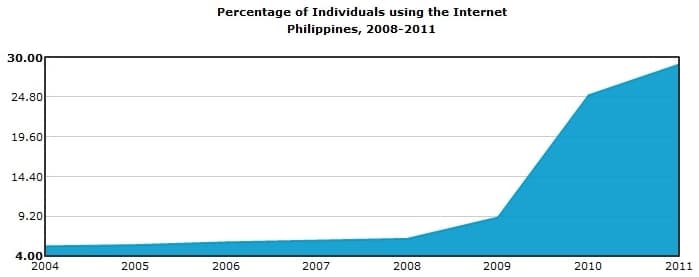Philippine higher and vocational education: revamped for 21st century demands
Last week we introduced various opportunities for education providers looking to bolster ties with the Philippines – from K-12 to language to the vocational sector. Today, we expand on this by delving into changes in higher education as well as TVET (technical vocational education and training), which came about in response to emerging economic and social issues.
Investing in education
The Philippines is booming - economic growth for 2013 could hit 7%, which is better than predicted - and with prosperity comes the demand for education quality. Filipinos want their children to have access to good schools, as well as opportunities in vocational and higher education that will lead them toward employment when they graduate. Graduate employment is a concern at a time when unemployment rates are rising in the Philippines, despite the economic growth. The National Economic and Development Authority (NEDA) said the “majority of the unemployed were high school graduates (31.7%), college graduates (21.3%) and college undergraduates (14.6%).” The issue of stimulating job creation is of key concern to the current government, and efforts are being made to address it within the PHP 2.268 trillion (nearly US $52 billion) 2014 spending plan.
“We are enhancing social protections and creating opportunities for employment by focusing on job generating sectors like manufacturing, tourism, infrastructure, and agriculture, among others," Communications Strategy Secretary Ricky Carandang said.
In 2014, the Department of Education will once again receive the lion’s share of the national budget, with PHP 336.9 billion (over US $7.7 billion) or nearly 15% of the total, which is 14% more than the amount allocated in 2013. Most of this new funding will work to stimulate and develop the K-12 sector, as ICEF Monitor outlined last week.
Higher education adjustments
Higher education institutions (HEIs) and the Philippines government are doing what they can to create solutions to the unemployment problem. Two examples include:
- reforms transforming agri-colleges into state universities to provide more opportunities to disadvantaged students;
- quality control by the Commission on Higher Education (CHED) shutting down programmes that aren’t up to standard.
The Department of Labor and Employment (DOLE) is doing its part by launching a ‘My First Job’ facilitation programme which will provide skills training to the tune of US $5.6 million. Funding for the programme was provided by the Asian Development Bank (ADB) and the Canadian International Development Agency (CIDA) in the hopes that it helps “Filipino youth find jobs at much faster rate and encourages more foreign investors to put up business in the country.”
With economic growth as high as it is, foreign investors (including education providers) should be looking at these kinds of opportunities to develop.
Higher education institutes are responding too. Some are offering programmes which they believe will give students the skills they need to find work. Business World Online reported that of the nearly 2,300 higher ed institutes in the Philippines, 1,259 of them were offering business degrees in 2012. The number is high when viewed in light of other countries - they quote a survey by the Association to Advance Collegiate Schools of Business which compared the Philippines to the US (1,624), Thailand (108), Vietnam (29), and Singapore (5). If you're hungry for more figures, the government website offers a wealth of data, such as enrolment statistics by discipline and institution type from 2001/02 to 2011/12.
It seems clear that HEIs are building partnerships with industry to determine which skills are needed so that the appropriate courses and programmes can be developed.
A higher education summit took place in early 2013 between business executives and university administrators, and the outcome was a list of recommendations for HEIs, one of which was the “identification of competencies that will be expected from graduates of higher education institutions in four courses: business management, information technology, electronics engineering, tourism and hotel/restaurant management.” These four subjects were chosen because they are the “academic areas producing the workforce for… industries important to the economy’s continued growth... Their improved relevance to industry, resulting from their redesign, would only mean greater employability for their graduates and a stronger workforce for associated industries.”
Tech talk
The Philippines’ rising economic prosperity is matched by burgeoning demand for all things hi-tech – just look at the graph below. Moreover, mobile phone subscriptions more than doubled from 2006 to 2011, and fixed broadband subscriptions more than quadrupled within the same time frame.

Vocational education reacts
In response to the youth unemployment rate and the desire for students to learn employable skills, the TESDA has been actively promoting its schools and learning centres as the more practical option to high school students. TESDA Director General Joel Villanueva said:
“I know the idea of a college or university education is always appealing. But TVET is more affordable, hands-on, and the path to a good job is shorter.”
TESDA supports a number of TVET centres across the Philippines, all of which train students in vocations that are vital to the country’s growing economy. For example:
- The Auto Mechanic Training Center in Tacloban, Leyte is funded by Isuzu Motors Limited of Japan and has seen 117 graduates since the centre opened in 2008, most of whom are now working for Isuzu Philippines.
- Carpentry training courses are proving popular: “Labor Secretary Rosalinda Baldoz recently announced that a study showed that the high demand for carpenters is expected to continue in the next five to ten years.”
A similar but different response to TESDA training centres is the ‘boutique’ college. A private hospitality management school called Enderun Colleges is growing in popularity and expanding the number of courses it offers. President Javier Infante explained, “Just like big hotels and boutique hotels, we are a boutique management school. It’s smaller, it’s new and a different approach.” Enderun has partnered with a number of schools and colleges in Europe, the US and other parts of Asia to send its students on a semester abroad. If the success of Enderun is anything to go by, we can likely expect to see more such colleges (and the international partnership opportunities) spring up as prosperous parents in the Philippines demand a quality education that they can pay for.
TVET goes international
A number of countries have partnered with TESDA either to receive its expertise or to train its experts. Projects like those listed below are there for the taking for any overseas providers wishing to develop their international influence in technical and vocational education.
- In July 2012, Bangladesh sent 22 vocational education teachers and supervisors to the Philippines to study the technical education and training system. This was the third such group, the first two having visited in 2010 and 2011.
- Two teams of officials from various Indian and Bangladesh ministries spent time studying TVET best practices in January of last year, hoping to take away ideas with them to adopt in their own countries. Secretary Joel Villanueva, Director General TESDA said, “We hope we can be a good role model to countries in pursuing the TVET track.”
- In February of this year, 40 staff and supervisors from the Technical and Vocational Training Corporation (TVTC) of Saudi Arabia travelled to the Philippines for a two-week study tour on strategic planning for administration and management of TVTC training programmes.
- Also in February this year, ten TESDA trainers took part in a workshop provided by the Japan Vocational Ability Development Association (JAVADA). TESDA and JAVADA signed a memorandum of agreement recently to provide technical assistance in “skills promotion in an enterprise-based set-up” to representatives from developing Southeast Asian nation governments.
- TESDA executives from across the Philippines spent 21 days in May on a training course in Manila and Singapore to “sharpen their skills in becoming better managers.” The training was provided by the Temasek Foundation of Singapore and the ITE Education Services (ITEES), a subsidiary of the Institute of Technical Education (ITE) which is also based in Singapore.
- Earlier this year, TESDA schools and training centres received PHP 4.4 million (over US $100,000) worth of new equipment donated by TongMyung University, a university in South Korea based in Busan.
TESDA schools and centres are creating graduates with employable skills which will contribute to the thriving economy. As Director General Villanueva has said,
"TVET could just offer the best chance at a solid career to graduates, and the savior against the rising unemployment.”
Education in the Philippines, from primary to secondary to tertiary and beyond, is evolving and responding as the country develops and grows. The nation’s government wants education at all levels to provide its citizens with knowledge and skills to keep it progressing long into the next century.
















